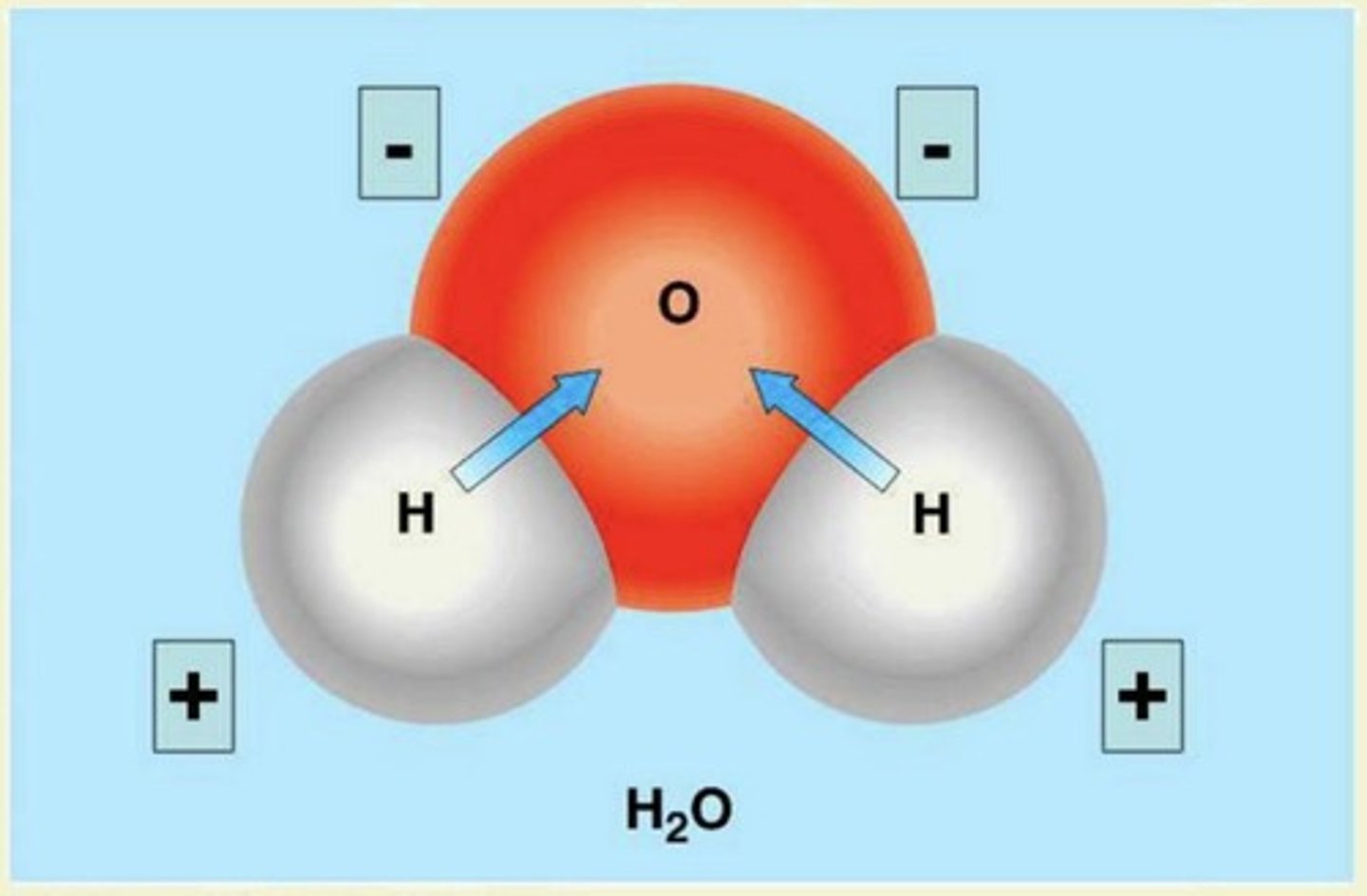Unit 2: Molecules of Life Review Guide
1/23
There's no tags or description
Looks like no tags are added yet.
Name | Mastery | Learn | Test | Matching | Spaced |
|---|
No study sessions yet.
24 Terms
Protons
Positively charged particles that define the element.
Neutrons
Neutrally charged particles.
Electrons
Negatively charged particles that do the covalent bonding.
Hydrogen bonds
Bonds that give water properties such as high heat capacity, high surface tension, and high boiling point.
Cohesion
The attraction of molecules for other molecules of the same kind.
Adhesion
The attraction between two different molecules, atoms, surfaces, or substances.
Why is water a good solvent?
Water is a good solvent because its polarity allows it to dissolve both ionic bonds and other polar molecules.

Why does water expand when it freezes?
Water expands when it freezes because its molecules form a special structure that takes up more space.
Evaporative cooling
Water absorbs a lot of heat when it evaporates, helping to cool surroundings.
pH scale
A scale that measures the amount of hydrogen ions.
Acid
A substance with a pH below 7.
Neutral
A substance with a pH of 7.
Base
A substance with a pH above 7.
Nutrients
The six main nutrients our bodies need are carbohydrates, protein, fats, vitamins, minerals, and water.
Vitamins
Organic substances made by plants or animals.
Minerals
Inorganic elements that come from soil and water and are absorbed by plants or eaten by animals.
Common elements in living things
The six most common elements are carbon, hydrogen, nitrogen, oxygen, phosphorus, and sulfur.
Carbohydrates
Composed of only three elements: carbon (C), hydrogen (H), and oxygen (O).
Lipids
Primarily composed of carbon, hydrogen, and oxygen.
Proteins
Composed of carbon (C), hydrogen (H), oxygen (O), nitrogen (N), and usually sulfur (S).
Nucleic acids
Composed of carbon (C), hydrogen (H), oxygen (O), nitrogen (N), and phosphorus (P).
Organic macromolecules
large, organic molecules such as carbohydrates, lipids, proteins, and nucleic acids.
Monomer
A molecule that is a building block for larger molecules (polymers).
Organic molecule
A molecule is considered 'organic' when it contains carbon atoms, usually bonded with other elements like hydrogen, oxygen, and nitrogen.